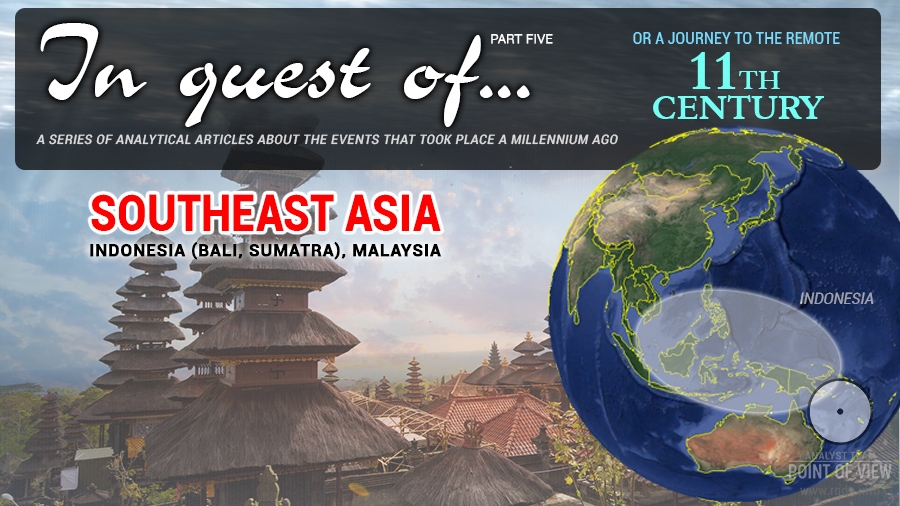
If you remember, in the previous Part Four of the In quest of… series, like pathfinders we were following traces of the unknown glorious seafarers who had fearlessly furrowed the immense Pacific Ocean with a certain clearly defined purpose as I believe. I cannot say with confidence whether it was an accidental concurrence of circumstances or rather a result of an implemented great spiritual plan that remained in traces of ancient cultural monuments on Easter Island and in Polynesia. Somebody may regard it as mere coincidence that the historical period of the 10-11th centuries AD which we consider in this article series was marvellously and simultaneously imprinted in North, Central and South America, as well as on legendary Easter Island and a bunch of other PacificIslands, having given birth to advanced civilizations and cultures.
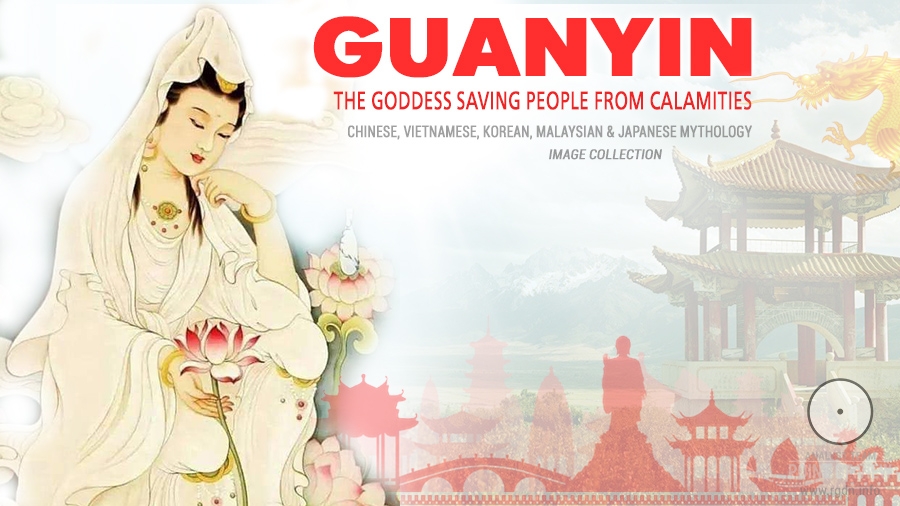
It turns out that even in socialist China people greatly revere and worship the divine deity – the virgin named Guanyin (or Guan Yin). Besides the Celestial Empire, this goddess is known in Vietnamese, Korean, Malaysian and Japanese mythology as a patroness and protectress of people from various calamities, giver of children and childbirth helper. Despite the fact that her holy image originates from Bodhisattva Avalokiteśvara of the Buddhist tradition, Guanyin is revered by representatives of nearly all religious denominations in China.
For a long time it seemed to me the Chinese political policy did not favour the freedom of religion, but I was greatly mistaken. Look what statutes the Chinese have erected in honour of their heavenly patroness Guanyin.

It turns out Virgin Mary is revered in Japan. You didn’t know, did you? Me neither, until I accidentally saw her image on the web. I set myself the task, found more images, and then decided to publish my image collection on the website.
She is very sweet, isn’t she? In Japanese images of Our Lady there are no features of sorrow, pain or bitterness as in the images usual for Catholic and Orthodox traditions. Only gentleness, touching tenderness and boundless love radiate from these simple Oriental scenes.
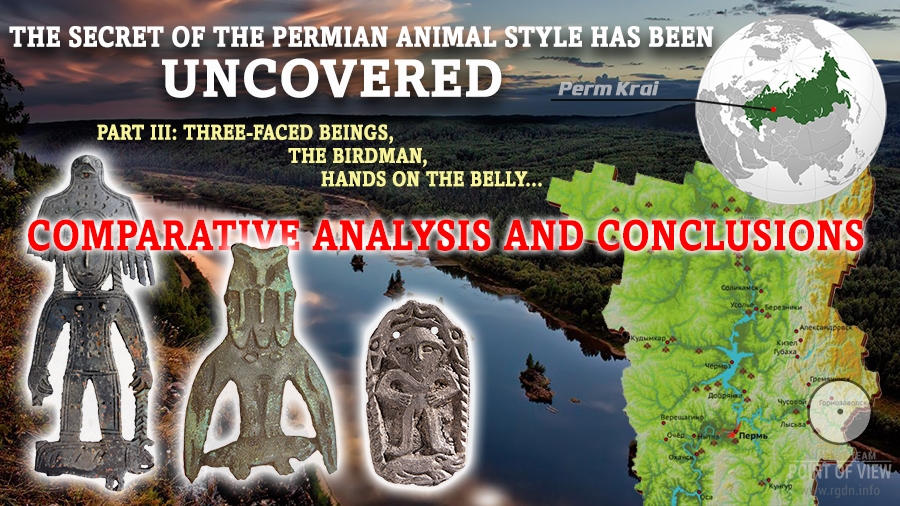
We are going on with publication of the Permian Animal Style artefacts, having sorted them by categories we are interested in and having added corresponding explanations to shed light upon the mystery of strange motifs in shaman images, Chud amulets and bronze cult casts. Let me remind of the links to the previous articles of the series:
In the final material dedicated to the Permian Animal Style I will first spilt the image collection into three sections: Three-Faced Beings, Birdman, and Hands on the Belly, then I’ll add several images of “sacred bugs”, and in the end there will be a brief comparative analysis based on photos of artefacts from other ancient cultures, published on our website earlier.
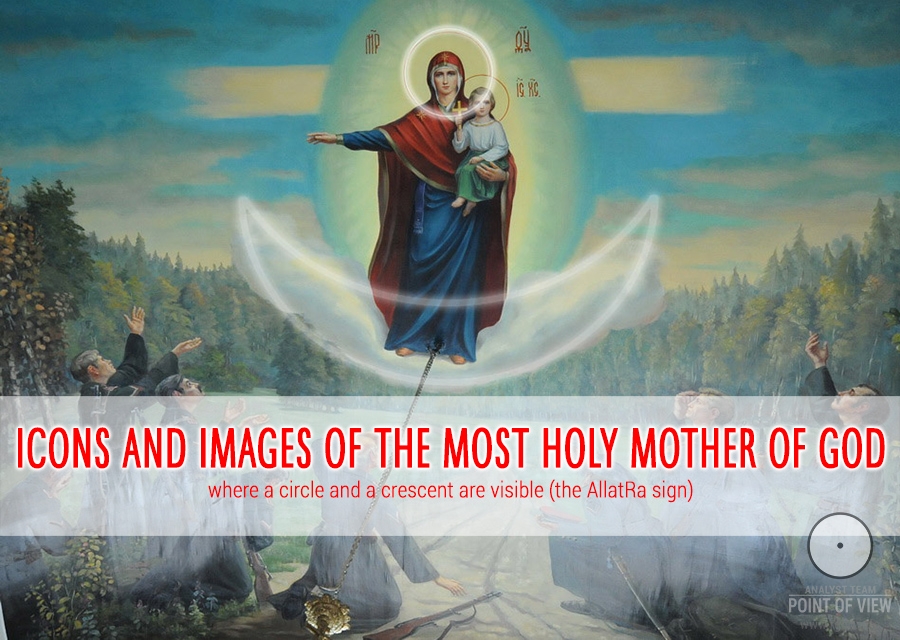
Many of you certainly attend churches, temples or houses of prayer, and believe in Single God. For sure, many of you respectfully treat the great woman depicted on numerous icons and images, revered in various religions and denominations, and named Mary. Unfortunately, today we know almost nothing about who this woman was and what was her destiny; and hardly many people have an idea of the true essence and meaning of her superior spiritual feat.
We have already dedicated a number of articles and analytical publications to her in the Holy Mother of God (Virgin Mary) section, and today we would like to post a new series of photos clearly showing that in Christian images and icons of Virgin Mary the sign consisting of a circle and a crescent is widely present – the sign that is already familiar to many readers as the AllatRa sign (more details about it may be found in our relevant analytical material).

Continuing the first article entitled The secret of the Permian Animal Style has been uncovered. Part I: The lateral animal Aspects, and considering archaeological exhibits kept in private collections and history museums and dating back to the ancient mysterious Perm culture, I would like to draw readers’ attention to the motif that we are already familiar with, i.e. the “standing on the beast” or “trampling on the beast” motif, which according to the Primordial Knowledge is interpreted as a person’s victory over his or her animal nature. This is new incontrovertible evidence that spiritually advanced people once lived in that region. Official history is unwilling to tell, or rather passes over in silence, when those people lived and what became of them.
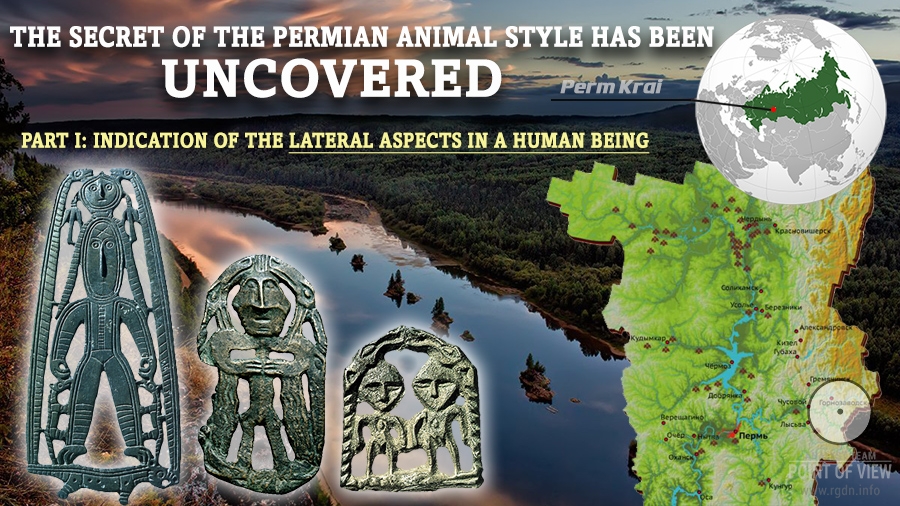
The Permian Animal Style includes shaman images, Chud amulets and cult casts – bronze artworks of the 7th century BC – 12th century AD, discovered in the forest and tundra area of Northeast Europe and West Siberia, from the Kama-Vyatka river basin to the Yenisei-Ob watershed. The found animal-style items created by the ancients are now kept in numerous private collections, antique shops, art galleries, and state history museums including the HermitageMuseum in St. Petersburg.
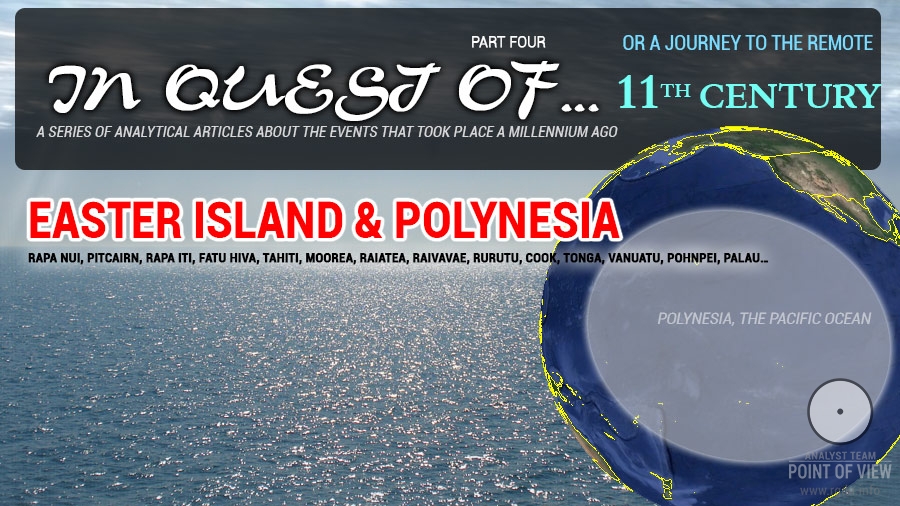
We kindly recommend you to familiarize yourselves with the previous articles of the series In quest of… A journey to the remote 11th century:
A journey to the remote 11th century series has proved to be much more difficult than I expected, though such difficulty even peps me up. During the last two months I felt ten times sorry for having started the theme. Max Vorontsov and Yura Ignatov who are searching for relevant information on the web also note a similar unclear pressure from outside. A part of my consciousness throws in numerous provocative questions and doubts about the reasonability of continuing the series, but at the same time the other part unexpectedly finds counterarguments, saying without such an analytical material dedicated to the initial preamble the whole website project may come down to a mere collection of authors’ lyrical opinions and lose its ultimate purpose. Therefore, we shall anyway endeavour to continue, though with a slight adjustment in our movement: we will minimize assumptions from our minds and refer only to universally recognized facts and discovered photographs. In particular, in this article we will have very, very many images, since the Pacific Ocean is truly immense.
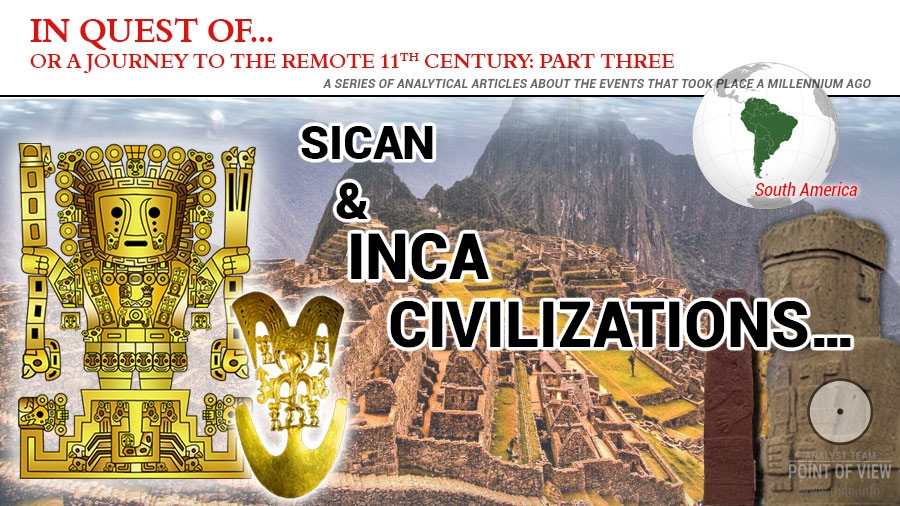
We kindly recommend you to familiarize yourselves with the previous articles of the series In quest of… A journey to the remote 11th century:
This is neither a book nor a science work intended to impress readers, gain public recognition or obtain other benefits, so let me get straight to the point. As we remember, the great civilizer Quetzalcoatl left the Toltecs around the 11th century. Legends say he sailed away to the east in the same direction he had arrived from over the eastern sea. Let’s imagine for a moment that the god-king of the ancient Mexicans was Bodhisattva – the teacher of humanity. In such case, what was the sense for him to abandon North America and go back to Eurasia, when South America was right across a little isthmus (the contemporary Panama Canal), which was very close by the planetary scale? You should agree it would have been quite logical for him to leave sprouts of spiritual knowledge on the vast South American continent, where the Andes and the Amazon rainforest stretch for thousands of kilometres, before his ultimate departure from that part of the world.

Extract from the article I know better:
“Who really needs your scribble? This was told so many times before! This information is available everywhere. You think you have made a discovery! Don’t even think of sending it – they will shelve it at best.”
***
Dear Anna, let me express my sincere gratitude and assure you that your scribble is really, really needed, at least I do need it, and this already indicates its usefulness. You’ve noticed some points and shared them, and now not just yourself, but WE together with you know it, and this means we all have become spiritually richer. To me, this is what exactly means sharing knowledge with others. In my opinion, in such an unsophisticated and non-heroic way human society transformation is taking place: when a person, becoming honest with oneself, uncovers mechanisms of the System operation in order to share such information with other people. Although the phrase was being written in a totally different context, I fully understand, for the voice in my head whispers similar things to me as well: “Oh, give up all these unnecessary and endless writings. You haven’t even bathed in the sun this year. Go to the seaside”… Nonetheless, your article has prompted me to act, and this is what I am doing right now.
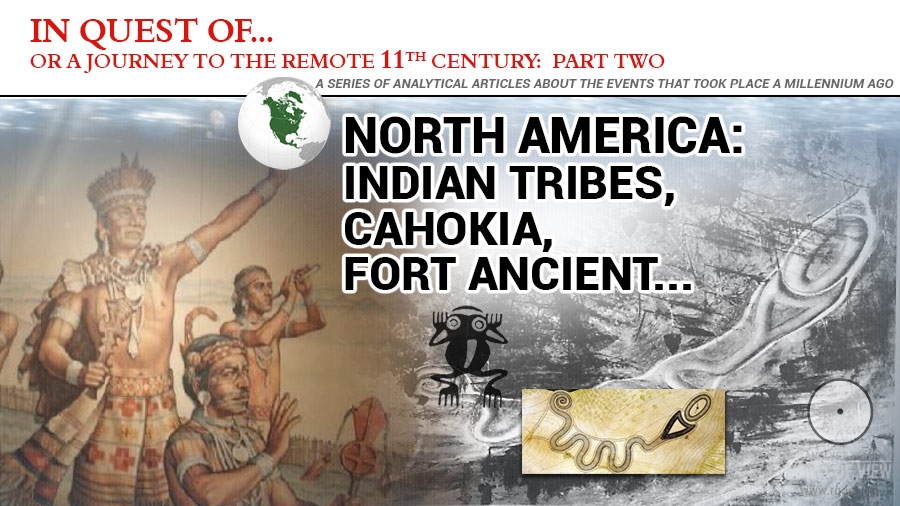
This material was not planned, but emerged unexpectedly as an addition to the article dedicated to Quetzalcoatl (Part One of the In quest of… series), who reached the shore of Yucatán Peninsula in the 10-11th century and gave spiritual knowledge, culture and flourishing to Toltec tribes. As you remember, in the said article I endeavoured to find traces of the Primordial Knowledge on the ruins of extinct Native American civilizations, and I intend to continue this work herein.
To avoid unnecessary long prefaces, let me proceed to the main point and say that several days after the previous publication I got a short e-mail message referring to North American Iroquois tribes, which have been living for a long time and still live in a cultivated environment in the current US territory. Several images were attached to the message.
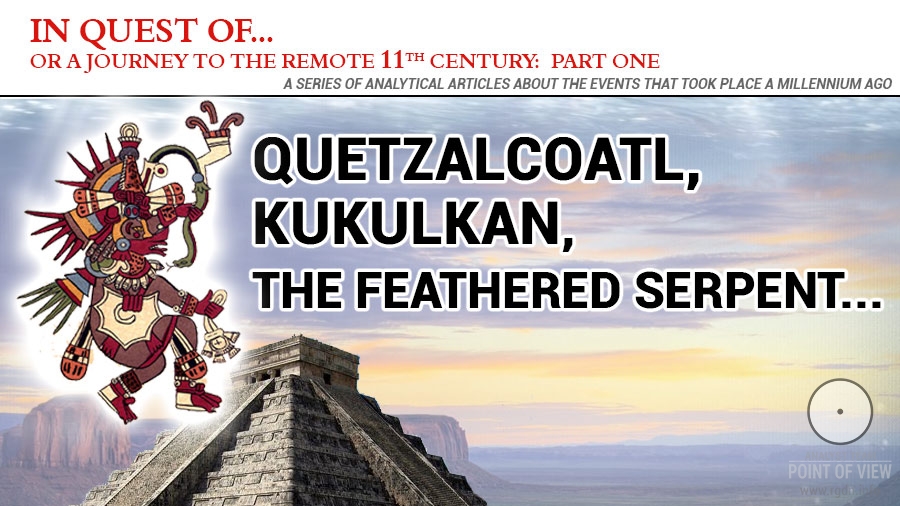
The 11th century AD, the remote time which nobody has particularly noted and which seems to be deservedly consigned to oblivion in history. What could be so interesting in such a distant past for contemporary humanity? Questionable events or inaccurate chronology? As a matter of fact why would anyone delve into what has vanished long ago? It’s hard to dispute with such arguments, especially today when there is a clear understanding of the value of the here-and-now point in human life. Nonetheless, there is a big BUT about this, and our inquisitive mind armed with the Primordial Knowledge endeavours to stand us in good stead and find interesting elements in historical records which, if linked together, unexpectedly reveal a striking picture for us. So, what are we actually talking about? In our subsequent publications we will tell you about the wave or even a whole tsunami of spiritual renascence that rolled around the planet in a marvellous and incomprehensible way. Although our finds represent just a weak hypothesis so far and we don’t claim them to be anything more significant, this is still a very exciting journey that for many people will hopefully become a pleasant surprise capable of inspiring, reassuring, and strengthening them on the spiritual path.

Project Aim









